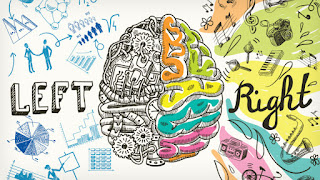Week 1 Blog Post: Two Cultures
Both professor Vensa and C.P Snow have optimism that there
will end up being some sort of bridge or “third culture” that will close the
between the arts and sciences. However, “there is still much work to be done in
building the bridge between the humanities and the sciences, “ (Vensa, 122). I
agree with the optimism portrayed by C.P. snow and Vensa about the possible
existence between the literary intellects and scientists. I am a psychology
major so I experience both of the two cultures everyday. Experiencing both
cultures within my major illustrates an example of a bridge being formed
between the two cultures.

In our immediate world here at UCLA there is an obvious
division between the literary sphere and the scientific sphere. Our campus is
specifically divided into two halves; north campus and south campus. North
campus consists of the literary and art majors, whereas south campus consists
of the math and science majors. The physical divide of our campus is an
illustration of C.P. Snow’s belief that “the intellectual life of the whole
western society is increasingly being split into two polar groups,” (Snow, 4).
Before learning about the two cultures this
week, I never deeply thought about a connection between the arts and
sciences. I did not consider the idea of combining the two cultures. However
John Brockman did consider this and is, “interested in people who can take the
materials of the culture in the arts, literature and science and put them
together in their own way,” (Graham-Rowe, 3). The third culture is now slowly
closing the gap between the two cultures and we are now seeing “that the
artist, the musical composer, the architect, the scientist, etc., all feel a
fundamental need to discover and create something new that is whole and total, harmonious
and beautiful,” (Bohm, 138).
Merging the two cultures with the idea of the
third culture in mind can increase our opportunities and affect us as students,
teachers, and as a population in a more positive way. For example in today’s modern world the
sciences and arts are staring to benefit each other by merging together. In
doing so, “some artists seek to
appropriate contemporary technologies to create new kinds of images, sounds,
installations and performances,” (Wilson, 1).
Bohm, D. "On
Creativity." JSTOR. N.p., n.d. Web. 04 Oct. 2013.
Graham-Rowe, Duncan. "John Brockman:
Matchmaking with science and art." WIRED UK. WIRED UK,
23 May 2016. Web. 10 Apr. 2017.
Snow, C. P. The
Two Cultures and the Scientific Revolution. New York: Cambridge UP,
1959. Print.
Vesna, Victoria.
"Toward a Third Culture: Being In Between." Leonardo. 34 (2001): 121-125.
Print.
Wilson, Stephen D. “Myths
and Confusions in Thinking about Art/Science/Technology.” College Art Association Meetings. New York, New York,
2000. Print




Alexis,
ReplyDeleteI am a sociology major so I am right there with you with the bridge major. In sociology, and I am sure it is the same with psychology, we use both art and science/math within our major everyday. We have to take specific sociology classes that involve each of these, like sociological statistic analysis and design in sociology. I agree that the third culture is creating a bridge between the two opposite cultures, and people with occupation like you and I could potentially have, we are helping build that bridge in society.
Hi Alexis, although I am not a psychology major like yourself, I can connect with you that I am surrounded my both cultures everyday being a dance major. I can agree with you and Professor Vensa that we still have a lot of work to be done, but I think it's amazing how close we are to this third culture. I mean you said it yourself, we are faced with it everyday, and we are getting closer and closer to bridging that gap. I deeply appreciate the textual evidence you were able to provide in this blog. It helped me not only understand your points better, but it also helped me understand the texts better.
ReplyDelete